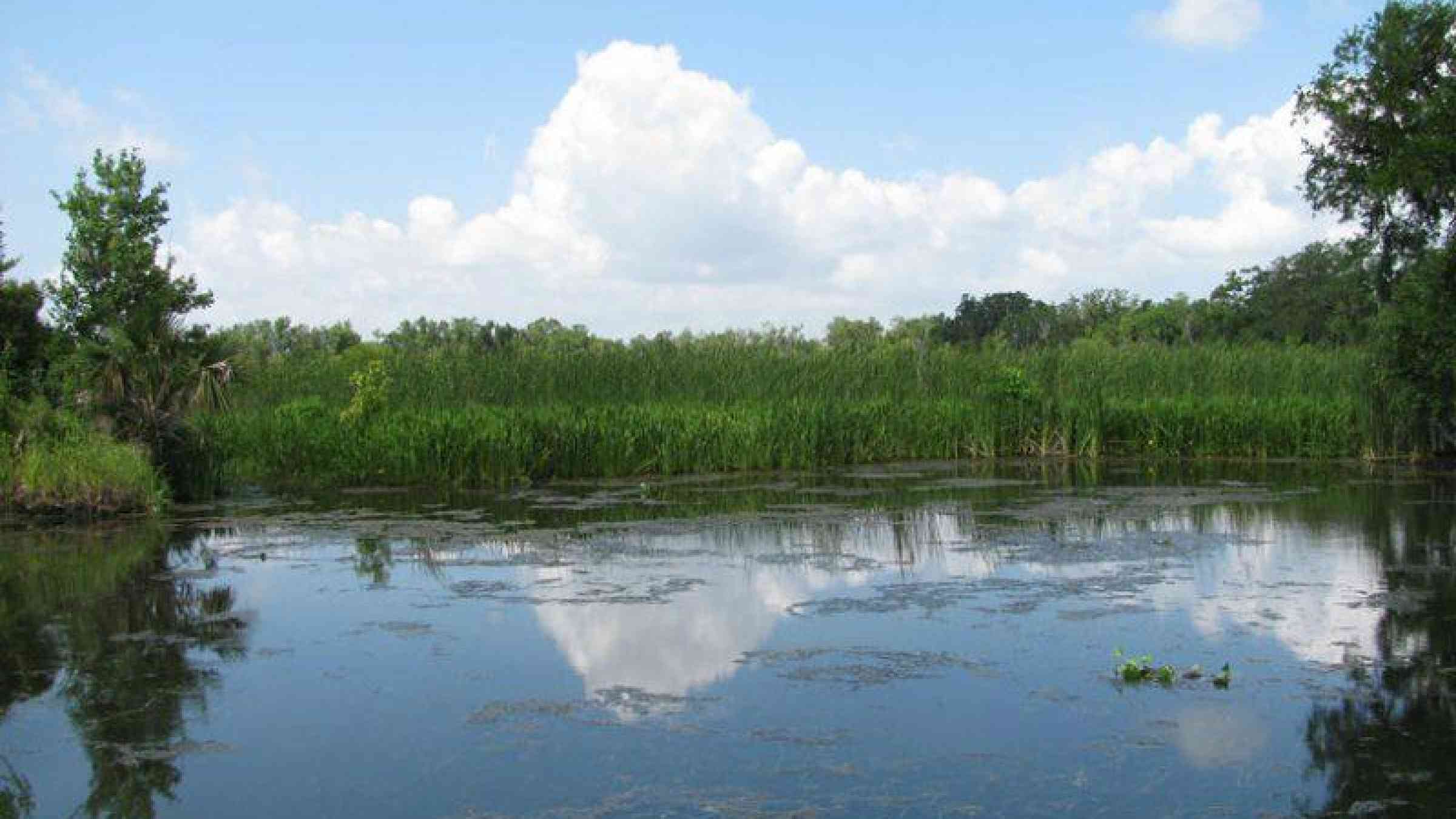The state wants to build two massive river diversions—cuts into the river’s levees—that will redirect the water and sediment it carries to eroding wetlands. The man-made diversions are meant to mimic a natural process; before the levees were built, the Mississippi periodically flooded its banks, spilling sediment into new areas and building land.
But a new study suggests that river diversions don’t always lead to land gains, and the researchers are calling for better models of the planned diversions before the state sinks billions into this restoration effort.
The new study, published last month in Restoration Ecology, looked at two previous man-made diversions in Louisiana: the Davis Pond diversion, which began in 1991, and 2002’s Caernarvon diversion. The team used two satellite-based data sets to evaluate whether or not the diversions led to a net gain or loss of land. The first data set was collected between 1985 and 2014 to measure wetland greenness, and the second was a data set developed by researchers with the U.S. Geological Service (USGS) to quantify decades of land area change in Louisiana.
The analysis showed that although both diversions created land where the river was opened up, overall, they led to net land losses farther downstream.
The analysis showed that although both diversions created land where the river was opened up, overall, they led to net land losses farther downstream. According to the researchers, that’s because most of the sediment dropped out of the water near where the diversions began, and the influx of fresh, nutrient-heavy water in the wetlands downstream increased the rate of soil decomposition and weakened plant roots.“For thousands of years, the plants scavenged nutrients out of the soil and put a lot of biomass into it to accomplish that aim,” said Eugene Turner, an oceanography and coastal sciences professor at Louisiana State University and lead author of the new study. “But now they have lots of nutrients, so they don’t have to allocate the energy to build biomass as much below ground, so they put it above ground.”
The end result, Turner and his colleagues argue, is that the coastal wetlands are even more susceptible to erosion when tides or storms roll in. Indeed, the authors say that the diversion likely exacerbated wetland losses wrought by Hurricanes Katrina and Rita in 2005.
The main implication, Turner said, is that the state needs to have better models of river diversions that account not only for hydrological factors, such as sediment load and water height, but also the effect of nutrients and fresh water on coastal ecosystems. “As it turns out, engineering has to compensate for biology too,” he said.
A different kind of diversion
However, officials and other experts said that the two diversions Turner and his colleagues evaluated aren’t the best proxies for the planned sediment diversions because they weren’t designed explicitly to build land. Rather, Davis Pond and Caernarvon were both freshwater diversions, built at a time when the consensus among managers was that salt water was the primary factor driving wetland loss.
“The idea in the 80s was that salt water was just wiping out the entire coast and that we had to prevent salinity intrusion,” said Christopher Swarzenski, a research hydrologist with the USGS. “Later, it became clear that saltwater intrusion was not such a big deal at all, but it takes so long to plan these diversions that, in the meantime, the two diversions were built and implemented.”
Turner and his colleagues also looked at another, much larger and natural diversion, called the Fort St. Philip crevasse, which opened up in 1973. In that case as well, the diversion resulted in net land losses.
It’s not clear that the benefits of any land built would outweigh the costs of other potentially deleterious effects of diversions.
The two currently planned diversions, the Mid-Barataria and Mid-Breton Sediment Diversion Projects, with a price tag of $2 billion to $4 billion, are “more than an order of magnitude larger” than either Davis Pond or Caernarvon, according to Swarzenski. “That’s at the point where they can actually carry a little bit of mud out of the river into the wetlands,” he said.However, Swarzenski notes that there is less sediment flowing down the Mississippi than there was when other historic diversions occurred. “The sediment load in the Mississippi River has decreased by half since 1980,” he said.
It’s also not clear that the benefits of any land built would outweigh the costs of other potentially deleterious effects of diversions. For example, Swarzenski points to the fact that in the wake of this year’s historic flooding in the Midwest and the prolonged opening of the Bonnet Carre Spillway, Mississippi declared that the freshwater flooding led to irreparable harm to its marine life. A river diversion at a scale large enough to build land would also divert enough fresh water to have similar effects along Louisiana’s coast, he said.
“The main take home from the Turner article,” Swarzenski said, “is that much better empirical evidence needs to be collected to understand how diversions work before committing to expensive diversions [that are] irreversible once built.”
